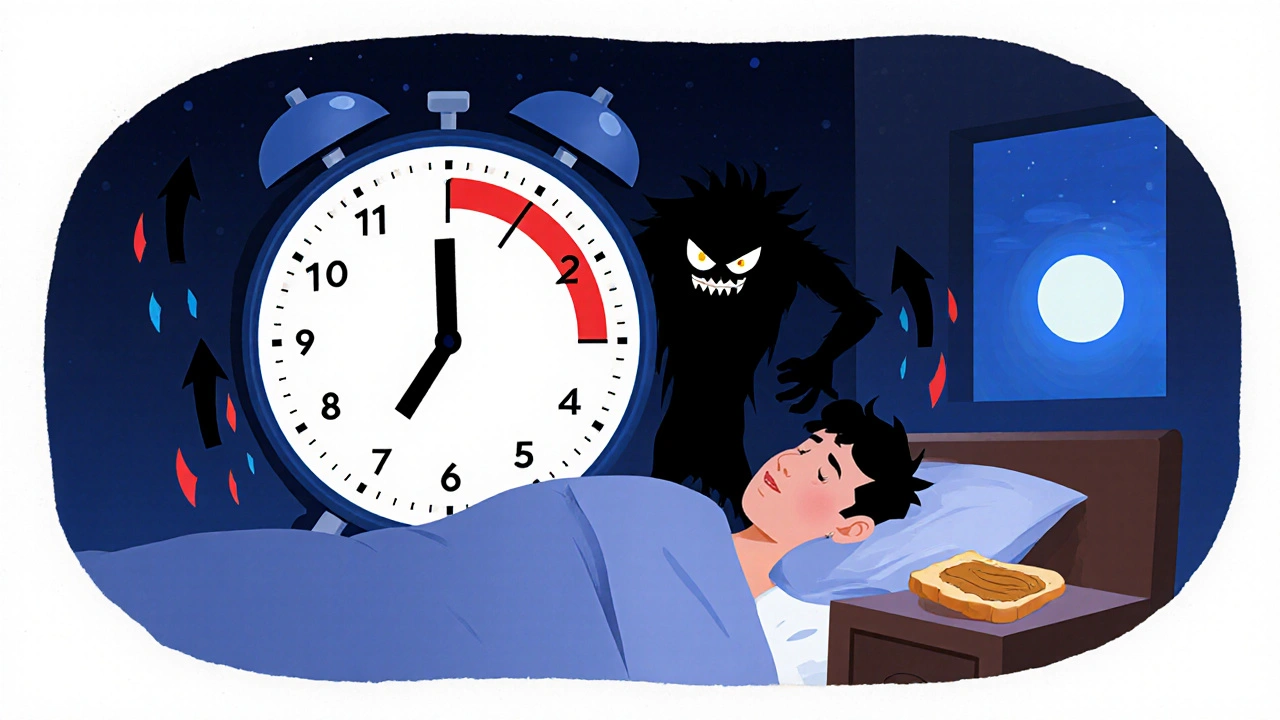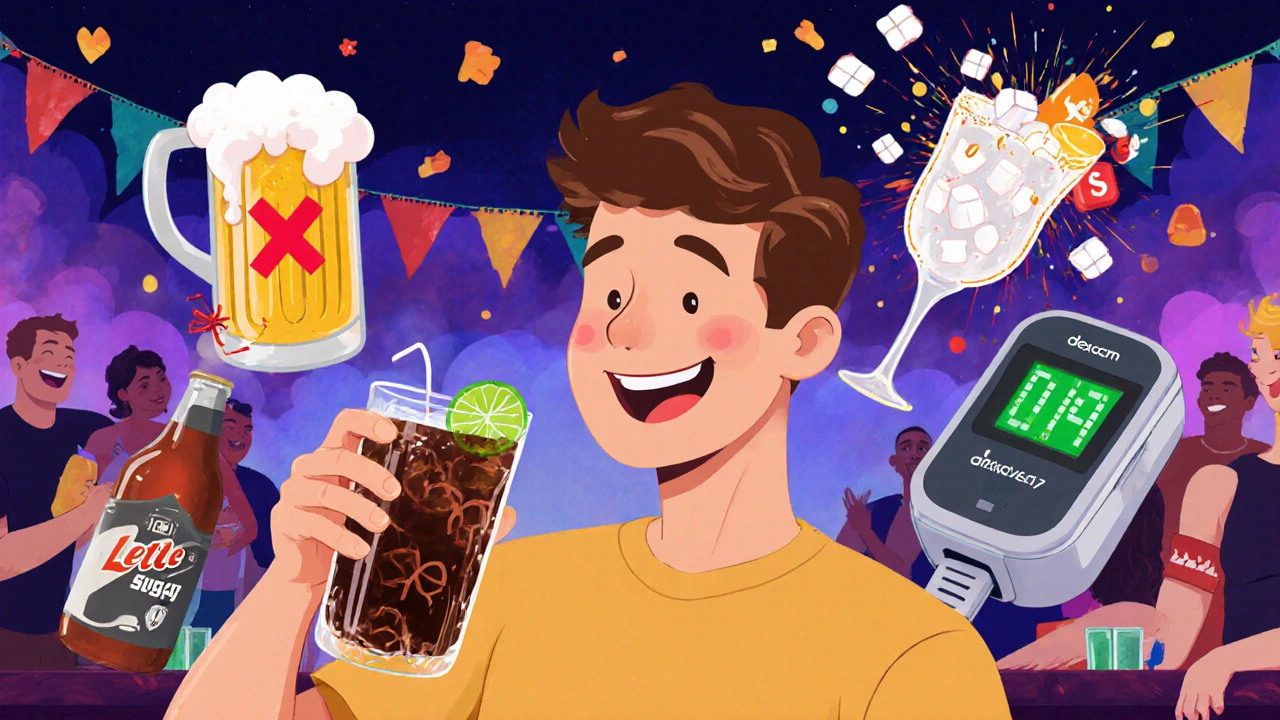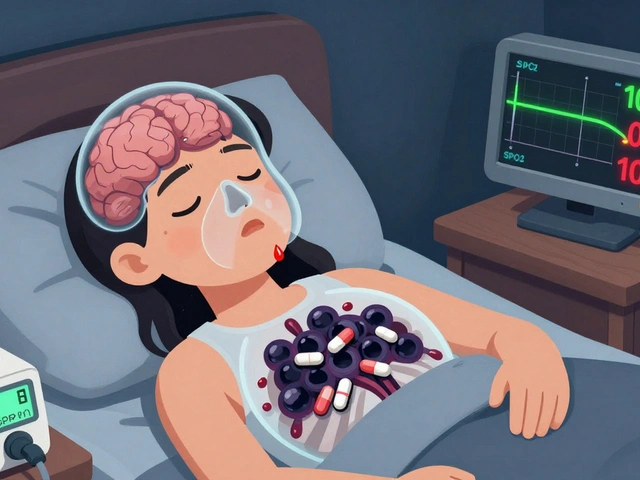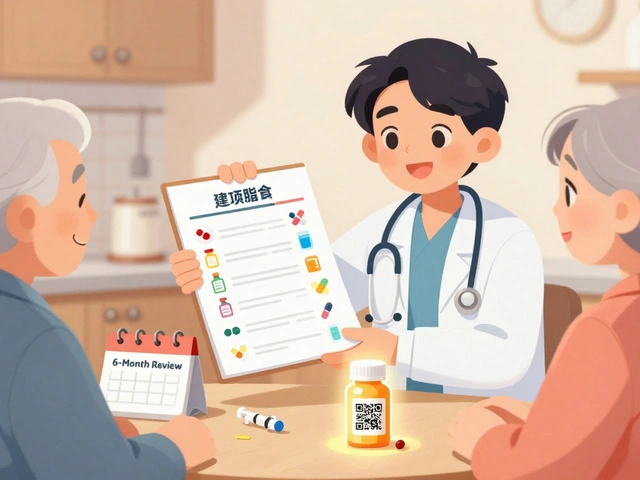Alcohol and Diabetes: Safe Drinking Guidelines and Hypoglycemia Risks

Drinking alcohol with diabetes isn’t just about choosing between beer or wine-it’s about managing a hidden danger that can sneak up when you least expect it. For many people with diabetes, alcohol can trigger a dangerous drop in blood sugar, sometimes hours after the last sip. And because the symptoms of low blood sugar-dizziness, confusion, sweating-look a lot like being drunk, others might not realize you’re in medical danger. This isn’t theoretical. About 25% of people with type 1 diabetes and 15% with type 2 experience at least one alcohol-related hypoglycemic emergency every year, according to Mount Sinai’s 2023 meta-analysis. But it doesn’t have to be that way. With clear rules, smart choices, and a few simple habits, you can enjoy alcohol safely-if you know what to watch for.
What Happens When You Drink With Diabetes?
Your liver has two jobs: filtering toxins and keeping your blood sugar steady. When you drink alcohol, your liver puts everything else on hold to deal with the alcohol first. That means it stops releasing glucose into your bloodstream. If you’re taking insulin or medications like sulfonylureas, your body is already lowering blood sugar. Add alcohol, and you’re stacking two forces that pull glucose down-fast.
The drop doesn’t happen right away. Alcohol can cause a small spike at first, especially if you’re drinking sweet cocktails or beer. But within a couple of hours, your liver shuts off glucose production. That’s when things get risky. The drop can last up to 12 hours, even into the next morning. And if you’re asleep? You won’t feel the warning signs.
It’s not just about how much you drink-it’s about how your body reacts. People on insulin or sulfonylureas are at the highest risk. One study from Mount Sinai found that combining alcohol with sulfonylureas increases hypoglycemia risk by 50%. Even if you don’t take medication, your body’s natural ability to rebound from low sugar is impaired after drinking.
How Much Is Safe?
The guidelines are simple, but strict: no more than one drink per day for women, and two for men. That’s it. And those drinks need to be spread out over at least three days a week, with alcohol-free days in between. Diabetes UK recommends no more than 14 units per week total-same for men and women.
But what counts as one drink? It’s not what you think.
- 12 oz (360 mL) of regular beer (5% alcohol)
- 5 oz (150 mL) of wine (12% alcohol)
- 1.5 oz (45 mL) of hard liquor (80 proof, 40% alcohol)
That’s it. No “large glass of wine” or “pint of craft beer.” Those often equal two or three standard drinks. And if you’re drinking spirits, never mix them with soda, juice, or tonic water. Those add 15-25 grams of sugar per serving. Stick to club soda, diet tonic, or plain water.
And here’s the hard truth: there’s no such thing as a “diabetic-friendly” beer or cider. These products often have higher alcohol content-2-3% more than regular versions-to compensate for removed sugar. That means more risk of hypoglycemia, not less. Skip them.
Which Drinks Are Safest?
Not all alcohol is created equal when you have diabetes. Your best bets are drinks with little to no sugar and predictable alcohol content.
- Dry wines (red or white): 0-4g carbs per 5 oz glass
- Light beers: under 10g carbs per 12 oz
- Hard seltzers: most have 2g carbs or less
- Spirits with sugar-free mixers: vodka, gin, or tequila with club soda
These choices are backed by user feedback too. On Reddit’s r/diabetes community, hard seltzers have a 4.5/5 rating across 1,200 reviews for their predictable effect on blood sugar. Meanwhile, margaritas and sweet cocktails? Rated 1.8/5. One user wrote: “I used to love margaritas. Now I know they’re a blood sugar rollercoaster. One drink and I’m crashing by midnight.”
Avoid anything sweet: liqueurs, dessert wines, piña coladas, cocktails with syrups or fruit juice. Some margaritas pack 25g of carbs-that’s like drinking a candy bar. And sugary drinks don’t just spike your sugar-they make your liver work harder, delaying the crash until later, when you’re asleep.

When and How to Drink-The Exact Protocol
Drinking safely isn’t about willpower. It’s about following a checklist.
- Check your blood sugar before you drink. If it’s below 100 mg/dL, eat something first. Don’t drink on an empty stomach or when your sugar is low.
- Eat with your drink. Have a meal with 15-30g of carbohydrates. This gives your liver something to work with instead of pulling glucose from nowhere.
- Drink slowly. Sip over an hour or more. Chugging doubles your risk.
- Check again every two hours while drinking. Don’t wait until you feel weird.
- Check before bed. If your sugar is below 140 mg/dL, eat a small snack with carbs and protein-like a piece of toast with peanut butter. This prevents nighttime lows.
- Avoid alcohol within two hours of exercise. Working out lowers blood sugar. Alcohol lowers it more. Together, they can send you into a dangerous drop.
And never skip the snack before bed. Breakthrough T1D’s 2023 forum analysis found that 61% of alcohol-related emergencies happened overnight. People thought they were fine-until they woke up confused, sweaty, or not at all.
The Hidden Danger: Symptoms You Can’t Trust
Here’s the most dangerous part: low blood sugar and drunkenness feel the same.
Dizziness? Confusion? Slurred speech? Sweating? Shaking? All signs of hypoglycemia. But they’re also signs of being drunk. If you pass out after a few drinks, your friends might think you’re just passed out from alcohol. They won’t call 911. They won’t give you glucose.
Dr. Robert Gabbay, Chief Scientific Officer at the American Diabetes Association, says this is why alcohol-related hypoglycemia is so deadly. “People don’t recognize it. They think it’s intoxication. And by the time someone realizes it’s low blood sugar, it’s too late.”
That’s why medical alert jewelry is so important. Over 92% of endocrinologists surveyed in the Journal of Diabetes Science and Technology recommend wearing a bracelet or necklace that says “Diabetic” and “Risk of Hypoglycemia.” It’s not dramatic-it’s lifesaving.
Also, always carry fast-acting glucose. A small bottle of glucose gel, 4 glucose tablets, or even 4 oz of regular soda (not diet) can save your life. Keep it in your pocket, your bag, your car. Don’t assume someone else will have it.
Who Should Avoid Alcohol Completely?
Not everyone can drink safely-even with precautions.
Stop if you have:
- Diabetic neuropathy-alcohol damages nerves. If you already have nerve damage, alcohol makes it worse.
- Pancreatitis-people with diabetes who drink are three times more likely to develop this painful inflammation.
- Advanced liver disease-your liver is already struggling. Alcohol adds more stress.
- Metformin users drinking heavily-more than four drinks in two hours can trigger lactic acidosis, a rare but life-threatening condition.
- Pregnancy-no alcohol at all, regardless of diabetes status.
If you’re unsure, talk to your doctor. Your medications, your nerves, your liver-they all matter. What’s safe for one person might be dangerous for another.

New Tech Is Helping-But It’s Not a Free Pass
There’s good news: technology is catching up. The Dexcom G7 continuous glucose monitor now includes an FDA-cleared “Alcohol-Diabetes Safety Algorithm.” It watches your glucose trends and warns you if alcohol is likely to cause a drop. In clinical trials, it reduced severe hypoglycemic events by 37%.
The American Diabetes Association is also moving toward personalized guidelines. Instead of fixed numbers like “100 mg/dL,” they’re starting to use your own CGM data to set your personal safe zone. That’s a big step forward.
But don’t rely on tech alone. The algorithm helps, but it doesn’t replace checking your sugar, eating with your drink, or telling someone you’re diabetic. It’s a tool-not a safety net.
What People Are Actually Doing
Real people with diabetes are finding ways to drink without disaster.
One user on Breakthrough T1D forums said: “I drink one dry white wine with dinner, check my sugar before bed, and eat a small snack. I’ve had zero hypos in 18 months.” That’s the pattern: one drink, with food, with a bedtime snack, with monitoring.
Another said: “I used to think I could drink like everyone else. Then I woke up in the ER. Now I carry glucose gel and never drink without my partner knowing I’m diabetic.”
These aren’t extreme measures. They’re basic precautions. The difference between a night out and a hospital visit is often just a snack and a check.
Final Thought: It’s Not About Giving Up-It’s About Being Smart
You don’t have to give up alcohol to manage diabetes. But you do have to respect it. Alcohol isn’t the enemy. Ignorance is.
Follow the rules: check your sugar, eat with your drink, stick to low-sugar options, monitor after, and never drink alone without someone who knows your condition. Use the tools. Wear the bracelet. Carry the glucose. These aren’t restrictions-they’re armor.
And remember: if you don’t drink, don’t start for the sake of health. The American Diabetes Association says no alcohol provides enough benefit to justify starting. If you’re not drinking now, you’re already ahead.
Can I drink alcohol if I have type 1 diabetes?
Yes, but with extreme caution. People with type 1 diabetes are at higher risk of alcohol-induced hypoglycemia, especially if they use insulin. Follow strict guidelines: check blood sugar before, during, and after drinking; always eat with alcohol; avoid drinking after exercise; and never go to bed without a snack if your sugar is below 140 mg/dL. Carry fast-acting glucose and wear a medical alert bracelet.
Why does alcohol cause low blood sugar hours later?
Your liver prioritizes breaking down alcohol over releasing glucose. Normally, your liver keeps blood sugar steady by releasing stored glucose. Alcohol shuts that down for up to 12 hours. If you’ve taken insulin or other diabetes meds, your body keeps lowering sugar while your liver is busy processing alcohol. This delay means the danger doesn’t hit until hours after you stop drinking-often while you’re asleep.
Is red wine good for diabetes?
Some studies suggest moderate red wine (one glass per day) may slightly improve insulin sensitivity in people with type 2 diabetes. But the American Diabetes Association doesn’t recommend starting to drink for health reasons. Any benefit is small and doesn’t outweigh the risks of hypoglycemia, weight gain, or liver damage. If you already drink, choose dry red wine-but don’t start just to get health benefits.
What should I do if I feel dizzy after drinking?
Don’t assume it’s just being drunk. Check your blood sugar immediately. If it’s below 70 mg/dL, consume 15g of fast-acting glucose-glucose tablets, gel, or 4 oz of regular soda. Wait 15 minutes and check again. If it’s still low, repeat. If you can’t check or you’re confused, get help immediately. Tell someone you’re diabetic. Your symptoms could be life-threatening.
Can I drink alcohol if I’m on metformin?
Yes, but avoid heavy drinking. More than four drinks in two hours can increase your risk of lactic acidosis, a rare but serious condition. Stick to moderate drinking-one or two drinks max-and never drink on an empty stomach. Avoid binge drinking entirely. If you have liver or kidney issues, talk to your doctor before drinking at all.
Are sugar-free alcoholic drinks safe for diabetes?
Sugar-free doesn’t mean risk-free. Many sugar-free drinks, especially “diabetic” beers and ciders, have higher alcohol content to compensate for removed sugar. Higher alcohol means greater suppression of glucose production by the liver, which increases hypoglycemia risk. Stick to dry wines, light beers, or spirits with soda water instead. Always check labels for alcohol percentage-not just sugar.
Should I avoid alcohol before bedtime?
Yes, especially if you’re on insulin or sulfonylureas. Alcohol can cause a delayed drop in blood sugar that hits 3-8 hours after drinking-often during sleep. This is when hypoglycemia is most dangerous because you can’t wake up or respond. Always check your blood sugar before bed. If it’s below 140 mg/dL, eat a small snack with carbs and protein. Never rely on feeling fine-you can’t feel a nighttime hypo coming.
11 Comments
Nikki C
I used to think alcohol was the enemy until I learned to drink like a diabetic. One dry wine, with food, snack before bed. Zero hypos for two years. It’s not about giving up. It’s about knowing your body.
Simple. Works.
Vineeta Puri
Thank you for this comprehensive and compassionate guide. It is imperative that individuals living with diabetes are provided with accurate, evidence-based information that empowers rather than frightens. The distinction between moderate consumption and risky behavior is clearly articulated and deeply appreciated.
Victoria Stanley
I love how this breaks it down without shaming anyone. I’m type 1 and I still have a glass of dry rosé with dinner. Just always check before bed. And yes, I carry glucose gels in my purse like it’s lip balm. No shame. Safety > style.
Andy Louis-Charles
Hard seltzers are a game changer 🙌 I used to drink craft beer and crash by 10pm. Now I grab a spiked seltzer with lime and club soda. Blood sugar stays chill. Also, wearing my medical ID is non-negotiable. My friends know what to do now.
Douglas cardoza
Honestly I just avoid anything sweet. I’ll do a shot of tequila with lime and soda, eat a sandwich, and call it a night. No fancy cocktails. No guessing. No ER trips. Been doing this for 5 years. Works.
Adam Hainsfurther
The liver thing makes total sense. It’s not the alcohol itself-it’s what it does to your body’s backup system. Your liver’s like a bouncer who sees a fight and ignores everyone else. That’s why the delay is so sneaky. You think you’re fine. Then you wake up confused. Or worse.
Rachael Gallagher
They just want you scared so you’ll buy their gadgets. CGM? Medical ID? Glucose gel? All corporate scams. I drink what I want. My sugar’s fine. Stop pushing fear.
steven patiño palacio
I appreciate the clarity of this post. The protocol outlined is not only practical but medically sound. I have shared it with several patients who were uncertain about alcohol consumption. The emphasis on carbohydrate intake with alcohol and the bedtime snack is particularly critical for those on insulin.
stephanie Hill
Funny how they never mention that Big Pharma profits from all these glucose gels and CGMs. I mean, if you really wanted to help people, you’d tell them to just stop drinking entirely. But no, we need to sell them gadgets and make them feel guilty for enjoying a glass of wine. Wake up.
Akash Chopda
Alcohol is poison and the government hides this. They let you drink because they want you sick. Then they sell you the cure. I don't drink. I don't trust the system. My sugar stays stable because I avoid everything.
Alex Dubrovin
I used to think I could drink like a normal person. Then I passed out at a BBQ. Woke up in the ER. My buddy had no idea I was diabetic. Now I carry glucose in my wallet and tell everyone I meet. It’s not awkward. It’s life-saving.






Write a comment